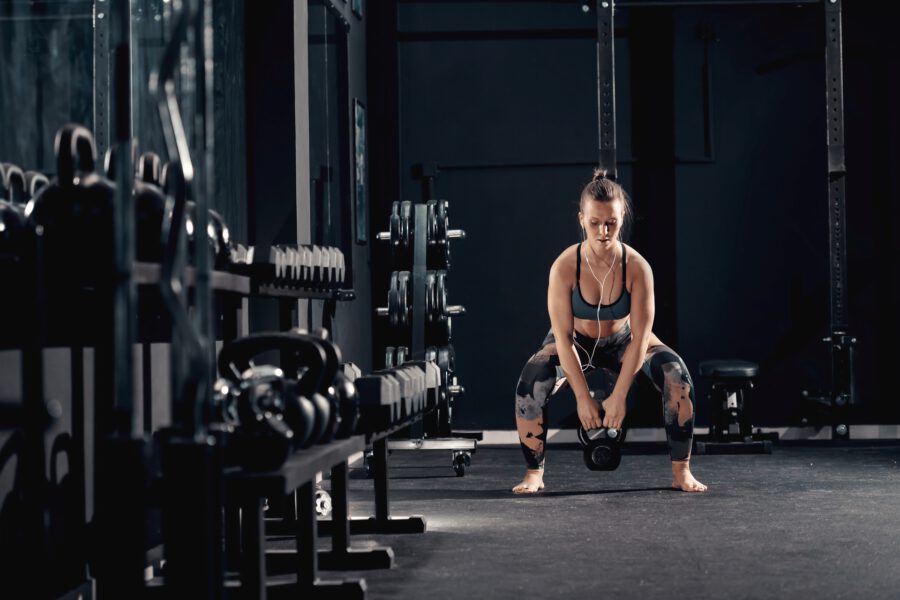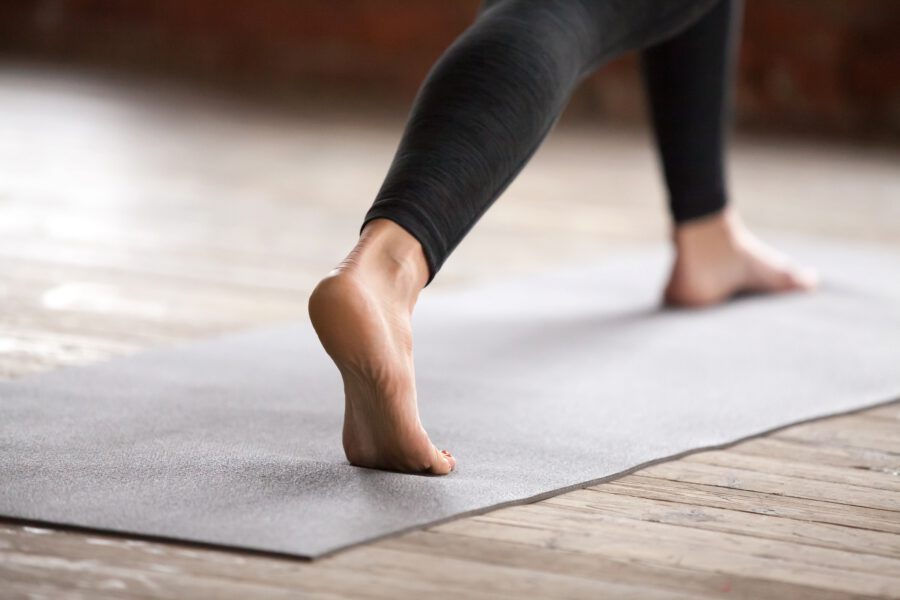Lifting Barefoot vs Weightlifting Shoes
Weightlifting shoe technology is advancing rapidly. With each new model comes marketing about the unique training advantages of wearing a lifting shoe. Yet, quite a few experienced lifters preferred to do their squats and other heavy Olympic-style training in bare feet.
In a previous article, we examined the benefits of wearing weightlifting shoes. This article presents the counterargument, with some reasons why you might consider barefoot lifting.
The idea that not wearing shoes will make your feet tougher persists among many people. It's no different than the old-timers who will tell you that working in a timber yard without wearing gloves is good for you because it will toughen up your hands. What usually happens in the latter case is that you end up ripping your hands to shreds and having to wear gloves just to function.
The problem is that people jump directly from one thing to the other. In the gloves example, they go from wearing gloves all the time to wearing them none of the time. Same thing with lifting with bare feet. The key to strengthening the ankles, midfoot, and toes through barefoot lifting is to transition gradually. If you suddenly go from squatting in a shoe with a heel elevation to barefoot squatting you are likely to develop plantar fasciitis or some issues with your ankle, knee, or hip joints.
The comfortable springy soles of training shoes may contribute to foot weakness. Shoes that provide support and cushioning are designed to reduce the workload on the muscles of the foot. As a result, these muscles are never permitted to function properly. That’s why the natural foot condition of people who spend most of their waking hours in shoes is constricted and underdeveloped.
If you compare the foot of a typical shoe wearer to that of a hunter-gatherer from Africa or Australia, you will see a big difference. The hunter-gatherer’s foot will be much wider, with toes that are larger and more splayed. As a result, they will have a much stronger base of support and an improved ground force.
The bottom of the foot is covered in muscle. When you're lifting bare feet, those muscles need to be strong and stable enough to support the heavy lifting that you'd normally be doing in shoes that provide added support. You also need to be able to spread out and articulate your toes to strengthen your ground force. Having bare feet will allow you to develop more ground force by creating a more natural forefoot connection to the floor. You are also able to more naturally splay your toes to widen your base of support.
People who are used to wearing shoes all day long have not trained their feet to be able to do these things.
Here’s a workout you should try barefoot:
There are thousands of tiny nerve endings on the base of your feet and toes designed to enhance your body's awareness of your surroundings. When you wear shoes, a barrier is formed between those nerve endings and the ground. When you exercise in bare feet, you will greatly increase your body’s sensory awareness. This can help improve your body’s proprioception - it’s the ability to adjust to the surroundings.
Greater proprioception can help to improve your form on exercises like squats and deadlifts.
If you are wanting to do your heavy lifting in bare feet, you should work up to it by first spending more time walking around with no shoes on outside. When you have built up some basic foot strength, begin doing mobility exercises, ankle and forefoot stretches, and movement exercises like the Farmer’s Walk. Then begin to do basic moderately loaded exercises such as lunges without shoes. Next, add dumbbells and start doing unilateral training barefoot. Do all of this before starting barefoot training with your big heavy weight exercises like squats and overhead presses.
That transition period from doing heavy lifting with shoes to barefoot lifting may take as long as a year. Be patient and don’t rush it.
It's easy to see a YouTube video of your favorite fitness influencer squatting in bare feet and think, "I am going to give that a try." What you don't realize is that they have had to progress through the stages just discussed to get to the stage of doing what they're doing. If you jump straight into heavy barefoot squatting without doing the build-up work, you are setting yourself up for injury.
In terms of actual muscle biomechanics and foot stability and ground force, there is nothing inherently unsafe about working out in bare feet. Some people, however, will not be able to squat as deeply, maintain as uptight a torso or get enough ankle dorsiflexion when they squat with their heel flat on the floor, which normally happens when you squat barefoot. That doesn’t mean that they need to wear weight-lifting shoes, however. By barefoot squatting on a slant board or placing a piece of 2 x4 timber under your heels, you can get all of the heel elevated benefits of squatting in a shoe.
The real only safety hazard of not wearing shoes in a gym is the danger of weight plates falling on your exposed foot. That is why many gyms have a ‘no shoes/no entry’ policy. Make sure that you are aware of the policy that your gym has regarding the issue before you begin transitioning to barefoot lifting.
When it comes to the issue of dropping a weight plate on your foot, I’ve been training in gyms for 35 years and have never even come close to dropping a weight on my foot. So, if you’re convinced of the benefits of lifting in bare feet, you may well conclude that those benefits outweigh the risks.
Barefoot lifting can help to strengthen your feet and toes, enhance your ground force, promote greater proprioception, and enhance your bodily awareness. If you do decide to train without shoes, first check the shoe policy at your gym. Then follow a program of gradually transitioning to shoeless training to allow your body to adapt to this more natural way of training.

